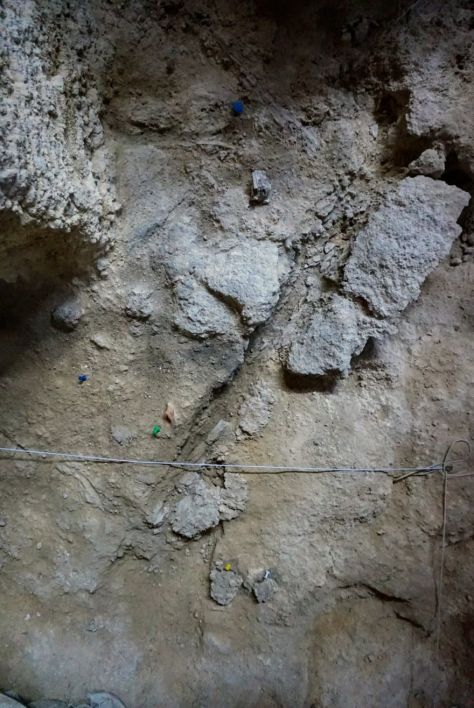NewsNext Previous
Abundant molds of wooden remains were found in the Abric Romaní site evidences from 60,000 years old Neanderthal communities
They were discovered during the excavation, conducted since August 5th and will end next Wednesday
This fieldwork season celebrate the 110 years of the discovery of prehistoric remains, in this site. Since then, 36 annual campaigns have been held
català – español – photos – NEAN Park

From the 5th of August to the 28th, the annual archaeological excavation is being carried out at the Abric Romaní site in Capellades (Barcelona, Spain). A group of 35 people have been collaborating in the excavation tasks under the coordination of Dr. M. Gema Chacón, Dr. Josep Vallverdú and the Dra. Palmira Saladié, three researchers from the IPHES (Catalan Institute of Human Paleoecology and Social Evolution). The other doctors and participating students come from this research center, from the URV (Rovira i Virgili University of Tarragona, including the Erasmus Mundus Master in Quaternary and Human Evolution Archeology) and other Spanish and international institutions.

Abric Romaní is an important site with archaeological remains, evidence of Neanderthal life. Sixteen archaeological levels have been fully excavated until nowadays, in an area of 300 m2. We have documented different types of occupations, suggesting societies with high mobility and with complex social structures. The mainly hunted species are reed deer, horse, aurochs and rhinoceros. The tools associated were mostly made of flint and limestone, and probably on wood.

This season is the 110 anniversary of the discovery of prehistoric remains in this site and since then 36 annual campaigns have been held. This year, the works were focused on the excavation of level R dated to 60,000 years old. Although it is the beginning of the level excavation, and the remains of fauna and the stone tools have not already been studied, we can document a very important amount of wood negatives or molds. Abric Romaní preserves traces of some plants remains, including wood, thanks to the precipitation of carbonates over them. After the decay of the wood or vegetal materials, only its footprints remain as negatives.
If the presence of some wood tool can be attested, the knowledge of wooden tools productions during the Middle Paleolithic could by implemented, given the perishable nature of wood. The continuation of the level R excavation will allow the analysis of the whole archaeological assemblage and especially the hearths preserved on the surface of the shelter. All this data will permit a better knowledge about the Neanderthal lifestyle.


